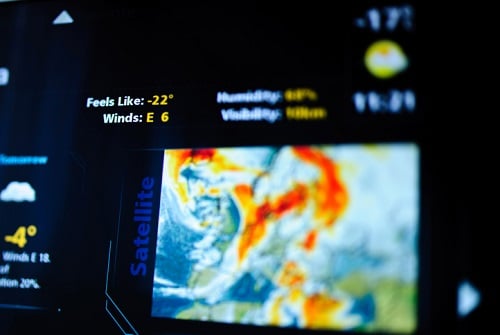

As any TV forecaster knows, predicting the weather can be fraught with inaccuracies, especially for forecasts that look out a week or more ahead. Even esteemed forecasting agencies and meteorological organizations, whose predictions about hurricanes were compiled by catastrophe risk modeling company Risk Management Solutions (RMS) in its annual outlook on the North Atlantic hurricane season, can change their expectations on a dime based on evolving conditions in the winds and waters.
For example, just one hour before their conversation with Insurance Business, RMS experts received a revised hurricane forecast from Colorado State University for the upcoming season. Nonetheless, the forecasts more broadly are still pointing to a less intense hurricane season than the US witnessed in 2017.
“At the beginning of June, the start of the hurricane season, the forecasts were calling for a near-average season for 2018, and this varies compared to the 2017 result, which was a much more impactful and above-average season, culminating in the events of Hurricanes Harvey, Irma, and Maria,” said James Cosgrove, event response senior analyst for RMS.
The university’s updated forecasts didn’t change this landscape, as its team lowered its previous prediction of the number of hurricanes and named storms we’ll see for the year.
“This downgrade reflects the current conditions across the Atlantic that are more hindering for hurricane activity this season,” said Cosgrove, adding that vertical wind shear has been stronger across the Caribbean so far, which tends to break up the formation of storms, while the air mass being dragged into the Atlantic from the African continent is very dry and stable, which also tends to inhibit hurricane activity. Finally, sea surface temperatures in the Atlantic – notably, the area where major hurricanes, like Irma and Maria, developed in the past – are some of the coldest on record and that factor also prevents storms from growing.
Though short-term forecasts are useful for the insurance industry to determine what kinds of losses their clients might experience in the coming months, RMS catastrophe models have a longer outlook and rely on their medium-term rate, which analyzes climate models representing several theories of Atlantic hurricane variability to produce forecasts revealing the average activity expected for the next five years.
“This medium-term view can be used as a more precise way to see how the next five years will deviate from that average – do we expect it to be higher or lower – so you can use that view of risk to ascertain whether or not your average premium that you would normally write for that property or that region should be higher or lower in the near-term,” said Tom Sabbatelli, event response manager for RMS.
Even with an outlook for the year in hand, storms that make landfall are the ones that tend to cause the most damage, and it’s still difficult to predict which hurricanes will move inland.
“A lot of these forecasts from the agencies are for storms occurring anywhere in the Atlantic, so we’re not really talking about storms making landfall,” said Sabbatelli.
There are factors that forecasting agencies can look to as a hint of what’s to come, such as the location of the Bermuda High, a high pressure system over the middle of the Atlantic that can shift from east to west over the course of a year. When it’s closer to the US, it tends to funnel storms up towards land, but if it’s further out to sea, it will pull storms away from land.
“A lot of insurers need to consider that these views of risks look at the overall risk of development in general,” explained Sabbatelli. “There is a correlation between how many storms form in general and how many make landfall, but it’s very difficult to say year-over-year in these annual forecasts how many of those storms will actually hit land.”
